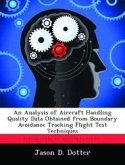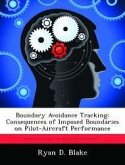Pilot-Involved Oscillations (PIOs) remain a significant issue in the design, testing and operations of aerospace vehicles. Traditional methods for predicting, describing, and analyzing these events have provided the community with improved methods for minimizing the occurrences of PIOs. However, these events continue to occur over a wide range of aerospace vehicle types and over a wide range of pilot acumen. The introduction of boundary avoidance tracking (BAT) by Mr. William Gray in 2004 added a missing piece to the PIO puzzle. This theory presented that PIOs may result from increasing pilot gain resulting not from maintaining a specified condition, but avoiding imposed limits or boundaries on a specified task. The initial modeling and simulation conducted by Mr. Gray has provided the community with a starting point for applying this theory to the analysis of PIO events.








